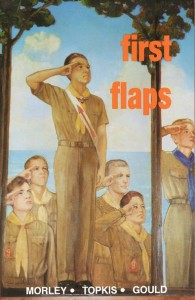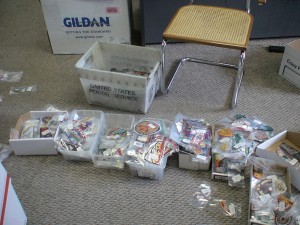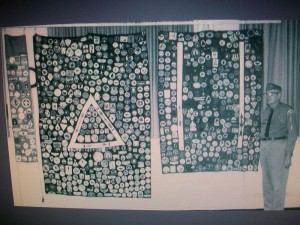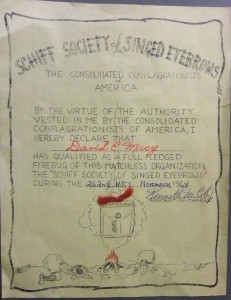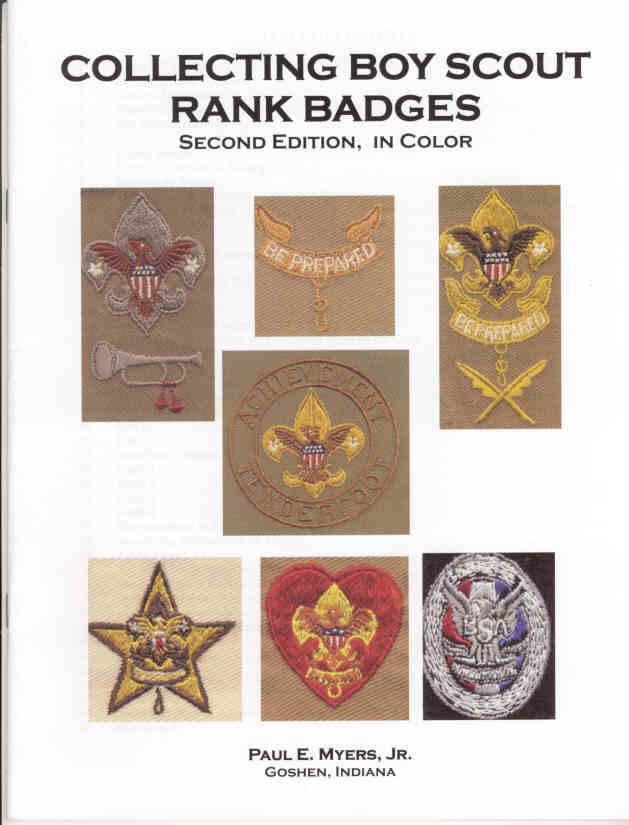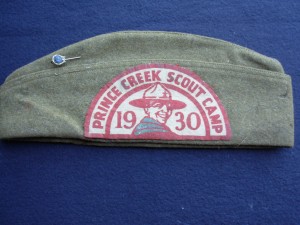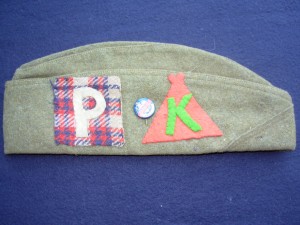I write articles for the International Scout Collectors’ Association, ISCA, journal on trends in the hobby. In thinking about an upcoming article and reviewing market conditions in different areas of the hobby prices are holding up or appreciating in some areas but not others. A common thread between the two, in my opinion, is where there has been and continue to be active collecting guides for active areas of the Scout patches.
One of my current thoughts is about major impacts on our hobby that are standing the test of time. One of those is the focus on first flaps. I recently posed some questions to one of the principle authors, Dr. Jeff Morley of California, about the first book on first flaps. When did you begin this focus? Why? What other things when doing the research that the hobby should know or remember?
Dr. Morley responded:
Hi Roy,
I started collecting first flaps in earnest in the mid 1980’s right after I
completed Green Book II. The information was incomplete and sometimes vague
as there was no picture guide and all we had to go on was a listing in the
Arapaho guide that, as you remember, was fairly good but lacked the
detailed information to make a positive ID on many of the flaps.
After the 1988 NOAC, I had reached a “wall” in my first flap collection. I
was down to about 20 needs (as far as I knew from the info that was
available at the time). So I made a decision to invest in placing ads in
local papers soliciting the first flaps that I still needed. I was not the
first collector to pursue this approach as Gene Berman had been placing
some very limited ads in communities where he was looking for specific
things (like the 214x) but he had never gone after first flaps. At the
time, my effort were very successful and produced some unexpected results.
First and foremost, by 1989, I had located and acquired all 20 of my
remaining needs, the last being the 311 Koo Ben Sho. However, in the
process, I also got a lot of new information from the people that were
contacting me, much of which was either new info or contradicted the
prevailing thoughts at the time of what constituted the “first flap”. The
former arrowmen that I came in contact with were simply members form the
1950’s that had received the flap, they were not leaders, arrowmen that had
continued on in the program or collectors. They were just your average Joe
that received a flap and knew the one or two years they were in scouts and
in the OA.Their info was very factual and not influenced by “folklore” that
had developed in the hobby by the 1980’s. I still have all of my research
correspondence from the late 1980’s with the orignal arrowman rom the
1930’s-50’s that contacted me with information.
My close friend and patch/OA historian extraordinair, Bill Topkis became
very interested in the first flaps in the late 1980’s and by 1990, was
helping with the patch research and information. The original difficulty
ratings for first flaps was developed by both Bill and I as a result of us
both determining what were our last fast flap needs and comparing our
independent collection lists.
So it turned out there were some new discoveries of what the first the
first flap from a lodge was and in particular, which variety was the
“technically correct” first flap. The hobby started to see OA collecting
more in terms of “varieties” in the late 1980’s, I believe largely as a
result of Green Book II (published in 1985) which began cataloging
California OA patches as issues and varieties. Also, what started to become
clearer as time went on was that in some cases (like lodge 96, 146, 189,
237 and others), the first flap issued by a lodge was for an event.
Previously, event patches were not considered actual lodge issues and were
not listed anywhere. But the truth was, like it or not, they were the first
flap shaped patch issued by that lodge and they were the first flap worn on
the uniform from those lodges.
As a result of these efforts, Bill, our friend and past Malibu Lodge 566
chief ,Tom Gould and I talked about how great it would be to publish all
the information we had acquired on first flaps and so in 1991 we started on
the original book. After it was published in 1992, the book became very
popular and at times, controversial. In some cases, local folklore in a
particular lodge considered their first flap to be different from what we
listed. That promoted vigorous discussion and more research. The results
improved the listing. Sometimes Bill and I were right and the folklore was
corrected. Other times, we had a few of the first flaps listed incorrectly
and we were corrected.
The final evolution in the first flap project developed when Dave Thomas
asked if he could collaborate with us to republish First Flaps in a large
glossy color book. Dave was instrumental in taking the information to the
next level and I believe that First Flaps in Color is now considered in the
Scout Collecting hobby as a classic and one of the seminal books in patch
collecting along with the Wabiningo Lodge Emblem handbook, Arapaho, Blue
Book and others.
